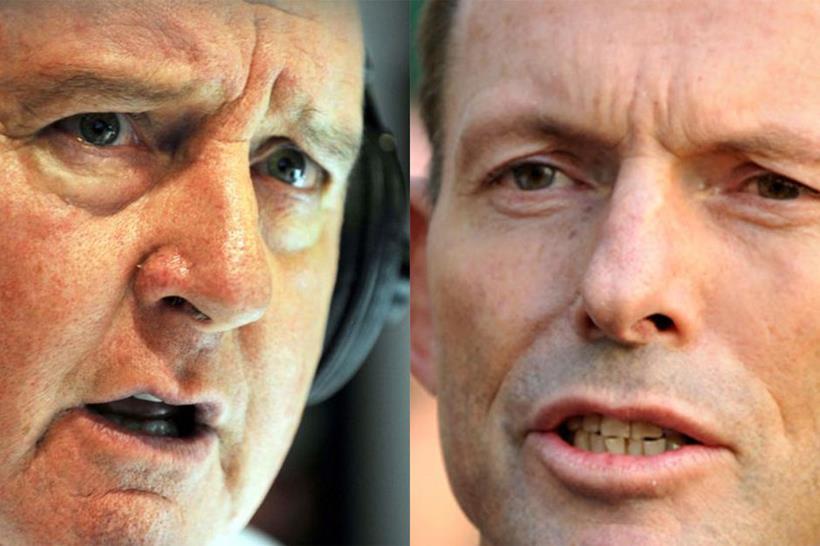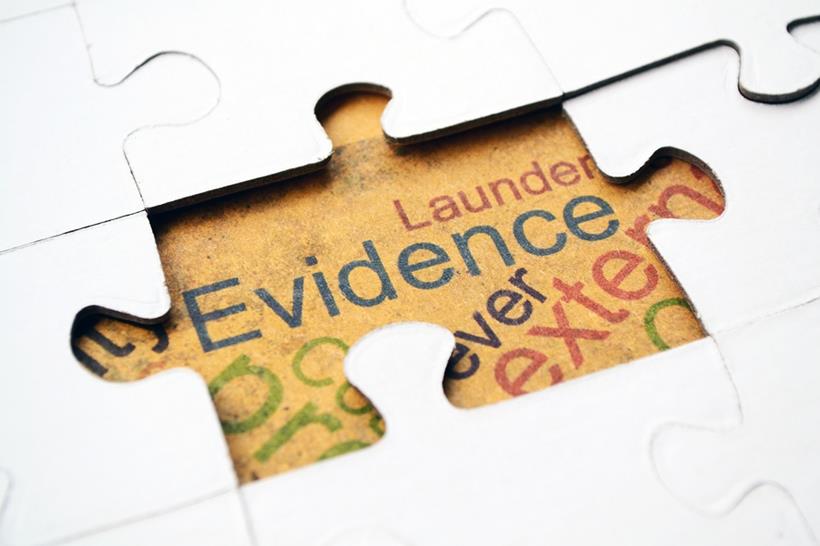
What do Tony Abbott, John Howard and Alan Jones have in common? One might say “their political persuasion”, which is certain to be more right than wrong. However, they have something else in common they are probably not aware of. They are, seen through the prism of the debate on climate change, extraordinarily poor at understanding and executing risk management.
Risk management is a fairly simple process. ISO 31000 is the international standard on managing risk and it doesn’t take a Rhodes Scholar to understand it.
The principles are:
- Determine the criteria by which you are going to assess risk.
- Identify the potential risk events.
- Assess the likelihood and consequence of that risk event occurring.
- Evaluate whether we are willing to accept the likelihood and consequence of that risk event.
- If we do not accept the likelihood and consequence of that risk event then take action to transfer the risk, reduce the likelihood or consequence, or insure against the risk event occurring.
- Evaluate whether we are willing to accept the risk left over (residual risk) after we have taken action.
- If we are willing to accept the residual risk, then communicate the risk and the treatment plan to all relevant stakeholders. If we are not willing to accept the residual risk, continue to take action.
Let us consider the reported utterances of Messrs. Abbott, Howard and Jones on the climate change topic in identifying, assessing, evaluating and deciding to take any action and see what we can learn about managing risk.
Determine criteria
The first task in managing risk is to determine what criteria we will use to assess and evaluate risk.The criteria for assessing risk in the context of our current debate on climate change seem to be reasonably well-agreed between Howard, Abbott, and Jones; on the face of it, protection of existing financial assets seems to be their major concern.
One might argue that they, like many of us, have not thought broadly enough about the criteria for managing risk. It should be noted that John Howard has talked about the need to consider the impact of taking action by means of pricing carbon on our ability to lift those afflicted by poverty into the realms of the middle class, so the impact on people is at least somewhat important as a criterion to him.
It may have been better if they also included the environment, physical assets, and the well-being of all people. Considering the long term (>100 years) rather than only the short term (<20 years) might also have been advisable.
Limiting the criteria by which we manage risk means that we may make decisions about risk that result in what appear to be unintended consequences. In reality, though, the problem was more lazy thinking about the criteria.
Identify risk events
Identifying the risk event in a climate change discussion is fairly simple as it is well documented. The primary risk event everyone is trying to avoid is that the planet warms by more than 2°C over the next 50 years.
In general, identifying risk events usually takes a bit more effort, although plenty of effort went into identifying this risk event in the first place.
Assess risk events
Assessing risks for their likelihood and consequence is difficult. Often there is not enough data to assess with any degree of certainty. If this is the case, it is better to err on the cautious side. Better still though, for events where the consequence could possibly be severe, to do some investigation. Research the likelihood by looking at your industry. It may well be necessary to consult with experts in the field.
Assessing the likelihood and consequence of the risk event of warming the planet by 2°C is where our trio also do not fare well in a risk management sense. To determine the likelihood of a risk event occurring, it is insufficient to rely on intuition as John Howard recently relied on in a lecture at the Global Warming Policy Foundation (Howard, 2013) to declare that he did not believe that climate change would have anywhere near the impact that scientists had claimed in their range of predictions.
In our climate change example, the industry experts we should consult would be scientists who have spent their lives studying, analysing and modelling the relationship between the inputs that govern our climate and the outputs such as air and sea temperatures, rainfall patterns, drought patterns etc. The science of all things is necessarily inexact, and that of climate is not an exception. However, when compared with intuition, it needs to be given considerably more weight, perhaps in excess of a million to one.
When we examine likelihood we implicitly accept that there is an uncertainty. That is why we express what we are talking about as risk management. Likelihood, though, is only part of the equation. We have to determine the consequences of the risk event occurring.
In our climate change example, the consequence of a 2°C temperature rise is more known than the exact impact of a rise in carbon dioxide content in the air and seas. Although there is also a range of consequences, the expected consequences, ranging from 66% certainty to 99% certainty, include but are not limited to:
- Warmer and/or fewer cold days and nights over most land areas.
- Warmer and/or more frequent hot days and nights over most land areas.
- Warm spells/heat waves.
- Frequency and/or duration increases over most land areas.
- Heavy precipitation events.
- Increase in the frequency, intensity, and/or amount of heavy precipitation.
- Increases in intensity and/or duration of drought.
- Increases in intense tropical cyclone activity.
- Increased incidence and/or magnitude of extreme high sea level.
(Table SPM.1 – Twelfth Session of Working Group I; Summary for Policymakers, 2013)
When considered in the context of our risk criteria, it is easy to see that the consequences of a 2°C rise in temperatures is severe to extremely severe with regard to assets, environment and people.
Evaluate the risks
The next task in managing risk is to evaluate the risks using a combination of its likelihood and consequence and determine if we are willing to accept those risks. Our propensity to accept risk is labelled our risk appetite.
We must determine, in the case of an organisation, the risk appetite of the organisation, and not just our own individual view(s). We need to consult with our stakeholders to get their view of an appropriate risk appetite. We must also ensure the stakeholders have all of the information we can give them to make an informed decision themselves.
In the case of Mr. Jones, it appears as if his desire to share his opinion overrides the need to inform his listeners so they can make a balanced decision in the debate. Prime Minister Abbott has already taken action to reduce the information available to the Australian public. In a risk management sense, this is a severe weakness.
When evaluating the acceptability of the likelihood and consequence of a risk event occurring, take care that you consult widely and ensure that all stakeholders have as much information as is available.
Develop treatment plan
After determining our appetite for risk, we must take action on those risk events that have a combination of likelihood and consequence that we are unwilling to accept. The actions may vary; one option is to transfer that risk to someone else or another organisation. This is often done in the shape of contracting others to do the work for us. We may also consider reducing the likelihood by, for example, putting in place engineering controls. We may also consider reducing the consequence by putting in place mitigations which may again be engineering-based or systems-based. What we choose to do must be of a lower cost than the consequence of the risk event occurring at the frequency we anticipate it may occur. It is usually so in that proactive action is lower overall cost than reactive action.
If we consider our climate change example again, then if we evaluate the likelihood and consequence of raising the temperature of the planet by 2°C as being unacceptable, then we have to take action.
The same scientists that completed the analysis that leads to an assessment that the likelihood of continued global warming is high and the consequences devastating whole nations and for assets and the environment, recommend that the world reduce its carbon emissions, which has a short term cost to the present economy.
However, Messrs. Abbott, Howard, and Jones seem to favour no action or limited action. At best, what they favour is inconsistent. The rationale they give for taking limited action stems either from a view that the assessment is wrong and that the likelihood of global warming continuing is low, or the consequence if there was continued global warming is also limited, or both. Based on the content of John Howard’s recent speech at the Global Warming Policy Foundation, the assessment on likelihood seems to stem from 15 years of data versus up to over 800 years of data. Or it stems from a belief, based on the utterances of Mr. Abbott and Mr. Jones, that something that is colourless and odourless and in small concentrations (i.e. carbon dioxide) cannot cause harm.
This is an obviously fallacious argument in that botulism can kill when inhaled at the rate of 10–13 nanograms per kilogram of weight of a person. To put that into perspective that is equivalent to one grain of sand in a thousand buckets of sand. Both arguments are poor in terms of evaluating risk when compared with the data collected from the atmosphere, oceans and ice sheets and glaciers over hundreds of years.
Unfortunately, it is common to find that people ignore the hard analysis undertaken in an assessment of risk and go with their gut instinct. It makes for poor judgements and makes it difficult to come to conclusions on treatment that reduces the risk. When managing risk it is imperative that the treatment plan be consistent with the assessed risk and our evaluation of our appetite for that risk.
Evaluate residual risk
Once we have completed our treatment plan there will be some risk which is left after our treatment plan is completed. This risk is labelled residual risk. It is insufficient to develop a treatment plan without completing an assessment and evaluation of the residual risk.
There is no evidence I can find of what Jones assesses as the residual risk, as dependent on the variety of possible treatment plans, which in the main seem to be one of the following:
- Take no action.
- Take direct action, paying people to reduce carbon emissions.
- Use a market mechanism of a floating price on carbon.
Prime Minster Abbott appears to favour the second option, ex-Prime Minster Howard appears to have favoured a market mechanism when it was politically expedient to do so, but is equivocal now it is less of a political football to be seen to be uncaring about the environment.
The analysis provided by climate change scientists suggest that even the most robust of current treatment plans may be found wanting with another twenty or so years of data to analyse. So this is probably the hardest part of analysing the risk of climate change. This is very much a “watch this space” existence.
This can be the case for us in managing risk too. It is important therefore that we set up a robust monitoring system to measure both the effectiveness of our treatment plan and any elements we can identify that might occur concurrently with an escalating chance of the risk event occurring.
Communicate and execute treatment plan
Once we have determined what treatment plan we have adopted and what monitoring plan we are putting in place, we must communicate both plans and the results of the monitoring to all stakeholders.
In our climate change example, John Howard has no responsibility to communicate the treatment plan and its results; Alan Jones is unlikely to do so other than as an “Opinion” piece. Only time will tell if Prime Minister Abbott will communicate without fear or favour to all stakeholders as is his responsibility.
Conclusion
The debates and discussion about climate change should be a risk management argument whatever our beliefs. I have used three prominent participants in the debate to highlight how easy it is, when managing risk, to be sidetracked by our personal prejudices and other issues which have no place in managing risk, but which still influence our decision making.
Bibliography
Table SPM.1 – Twelfth Session of Working Group I; Summary for Policymakers. (2013). Retrieved November 10th, 2013, from Climate Change 2013
Howard, J. (2013, November). Retrieved November 10th, 2013, from News Resource






